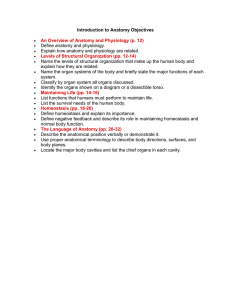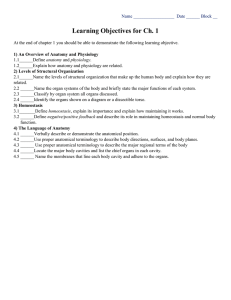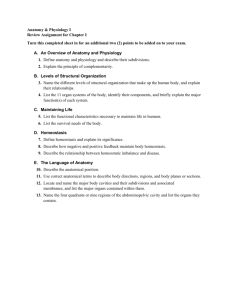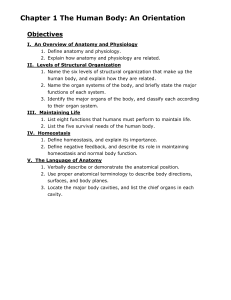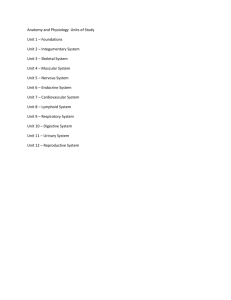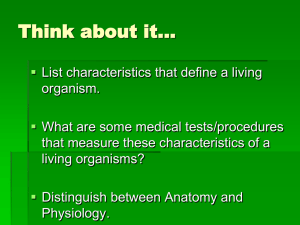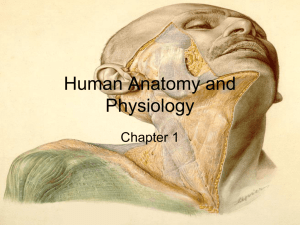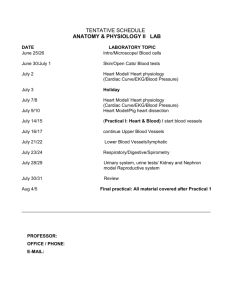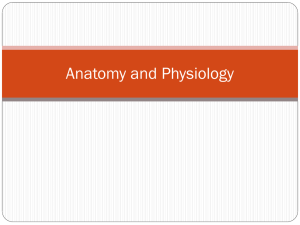Chapter 1 The Human Body: An Orientation
advertisement
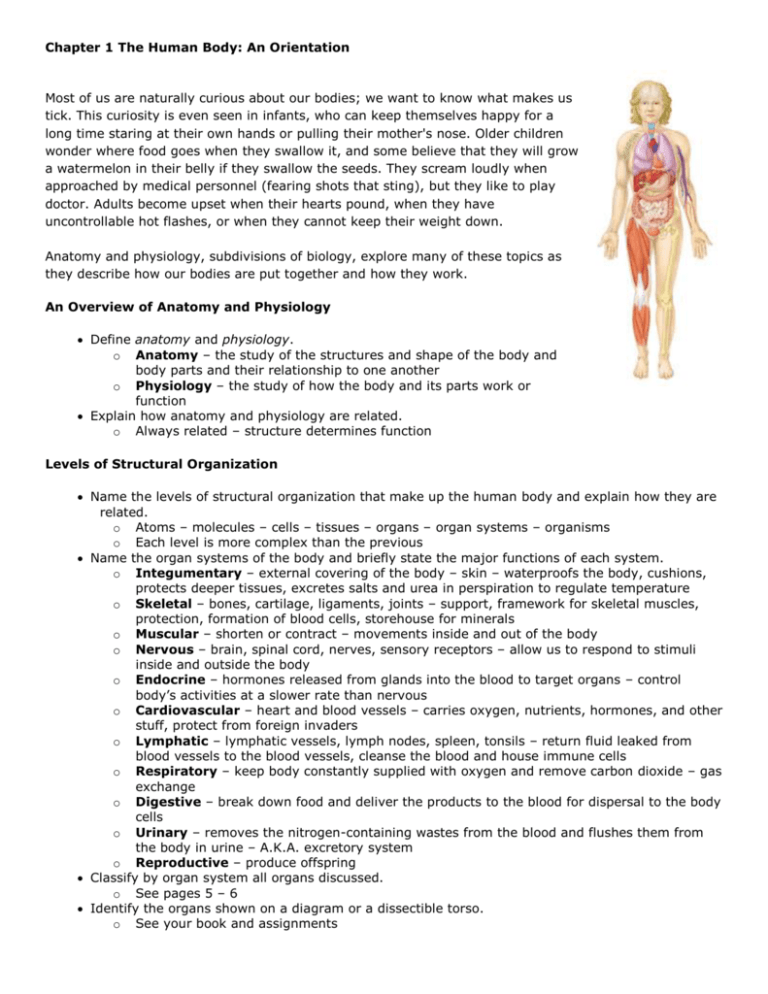
Chapter 1 The Human Body: An Orientation Most of us are naturally curious about our bodies; we want to know what makes us tick. This curiosity is even seen in infants, who can keep themselves happy for a long time staring at their own hands or pulling their mother's nose. Older children wonder where food goes when they swallow it, and some believe that they will grow a watermelon in their belly if they swallow the seeds. They scream loudly when approached by medical personnel (fearing shots that sting), but they like to play doctor. Adults become upset when their hearts pound, when they have uncontrollable hot flashes, or when they cannot keep their weight down. Anatomy and physiology, subdivisions of biology, explore many of these topics as they describe how our bodies are put together and how they work. An Overview of Anatomy and Physiology Define anatomy and physiology. o Anatomy – the study of the structures and shape of the body and body parts and their relationship to one another o Physiology – the study of how the body and its parts work or function Explain how anatomy and physiology are related. o Always related – structure determines function Levels of Structural Organization Name the levels of structural organization that make up the human body and explain how they are related. o Atoms – molecules – cells – tissues – organs – organ systems – organisms o Each level is more complex than the previous Name the organ systems of the body and briefly state the major functions of each system. o Integumentary – external covering of the body – skin – waterproofs the body, cushions, protects deeper tissues, excretes salts and urea in perspiration to regulate temperature o Skeletal – bones, cartilage, ligaments, joints – support, framework for skeletal muscles, protection, formation of blood cells, storehouse for minerals o Muscular – shorten or contract – movements inside and out of the body o Nervous – brain, spinal cord, nerves, sensory receptors – allow us to respond to stimuli inside and outside the body o Endocrine – hormones released from glands into the blood to target organs – control body’s activities at a slower rate than nervous o Cardiovascular – heart and blood vessels – carries oxygen, nutrients, hormones, and other stuff, protect from foreign invaders o Lymphatic – lymphatic vessels, lymph nodes, spleen, tonsils – return fluid leaked from blood vessels to the blood vessels, cleanse the blood and house immune cells o Respiratory – keep body constantly supplied with oxygen and remove carbon dioxide – gas exchange o Digestive – break down food and deliver the products to the blood for dispersal to the body cells o Urinary – removes the nitrogen-containing wastes from the blood and flushes them from the body in urine – A.K.A. excretory system o Reproductive – produce offspring Classify by organ system all organs discussed. o See pages 5 – 6 Identify the organs shown on a diagram or a dissectible torso. o See your book and assignments Maintaining Life List functions that humans must perform to maintain life. o Maintaining boundaries – keep inside different from outside o Movement o Responsiveness – irritability o Digestion – break down food o Metabolism – all chemical reactions inside the body to make ATP o Excretion o Reproduction o Growth List the survival needs of the human body. o Nutrients – diet o Oxygen o Water o Body temperature – enzyme function o Atmospheric pressure Homeostasis Define homeostasis and explain its importance. o Body’s ability to maintain relatively stable internal conditions even though the outside world is continuously changing o The body is in homeostasis when its needs are being adequately met and it is functioning smoothly o Virtually every organ helps maintain Define negative feedback and describe its role in maintaining homeostasis and normal body function. o The net effect of the response to the stimulus is to shut off the original stimulus or reduce its intensity o Most homeostatic control mechanisms are negative feedback but some are positive feedback – the opposite effect The Language of Anatomy Describe the anatomical position verbally or demonstrate it. o Body is erect with feet parallel and the arms hanging at the sides with the palms facing upward – thumbs outward Use proper anatomical terminology to describe body directions, surfaces, and body planes. o See page 12 – table 1.1 o See page 13 Locate the major body cavities and list the chief organs in each cavity. o See pages 16 – 17 in book

